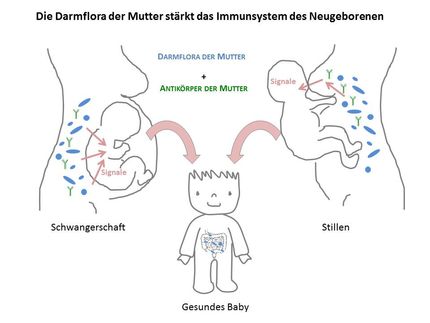Power-to-vitamins: microbes produce folate from simple basic ingredients
Biotechnology team obtains valuable byproduct in protein produc-tion
Advertisement
Take some carbon dioxide, hydrogen, and oxygen plus electricity from renewable sources – a bacterium and baker’s yeast need little more to produce proteins for human nourishment and the essential vitamin B9 in a conventional laboratory bioreactor system. This was the result achieved by a research team led by Professor Lars Angenent from Environmental Biotechnology at the University of Tübingen during the further development of his power-to-protein system. The new protein product with folate B9 can serve as a vegan basis for meat substitutes, potentially offering a long-term, climate-friendly way to feed a growing world population. The study has been published in Trends in Biotechnology.
Although many microbes are visually unspectacular, they can produce a wide variety of substances that humans can use, for example, in producing beer, wine, and cheese. “We already developed a power-to-protein technology. This utilizes two different microbes in succession: a Clostridium bacterium reduced carbon dioxide with hydrogen under exclusion of air to acetate, which the baker’s yeast, a fungus, then transformed under airflow into proteins,” explains Angenent. This first step only functioned, however, if the microbes were supplied with specific vitamins such as B9. “Humans can’t live on proteins alone,” says Angenent. “So we wanted to produce B9 at the same time.” The goal is not to feed more vitamins into the process than it produces.
Frugal bacterium
Together with his team, Angenent substituted the Clostridium bacterium from the first step with the bacterium Thermoanaerobacter kivui, which is more frugal and can itself form the folate necessary in the production of acetate. In the second step, the baker’s yeast produced large quantities of folate. It was already known that baker’s yeast can produce folate from sugar. “It does that too with roughly the same amount of acetate as basic material, our experiments show. Since we’re no longer adding vitamin B9, we’re certain that it is produced in the process,” he says. About six grams of the yeast, produced and dried, would be sufficient as a daily dose of vitamin B9 for a human. The experiments’ vitamin measurements were handled by a team led by Professor Michael Rychlik from TU Munich, one of the co-authors of the study.
“Our product isn’t yet a finished foodstuff, but the food industry can use it to develop foods,” says Angenent. Before consumption, substances that can give rise to gout first have to be removed from the yeast. In addition, the small bioreactor system from the laboratory will have to be converted into far greater scale plants – a process that can give rise to new problems. This will then be followed by food safety studies, as well as technical and economic analyses into the market for such products.
Thinking in cycles
So how far does Angenent want to take his vision of a food substitute? Will we be living on synthetic pills and pastes one day? “I’m mainly concerned with reducing the consumption of meat,” he says. “I believe consumers will get used to new products. This also comes about through pricing.” The food substitute could drastically reduce the cultivation of animal feed as well as environmentally harmful emissions from livestock farming. Overall, however, even more agriculture will be needed than before, so there is a need to expand the most resource-conserving form of crop cultivation possible. Moreover, farmers will in the future have to be financially rewarded for the added responsibility of protecting the soil and nature.
Angenent thinks in cycles and wider connections: “The growing world population is threatened by malnutrition, especially in countries that suffer from drought and whose soils are low in nutrients. In places like this, substitute products, such as ours, could improve the food situation,” he says. “The fact that we can produce proteins and vitamins at the same time in our bioreactor system at a high rate for sustainable vegetarian and vegan products with no significant use of land is a major step towards this goal.”
























































